We often think of our senses as being the ultimate in perception, yet the animal kingdom humbles us with its unique abilities. Some creatures have evolved to see the world in ways we can scarcely imagine, revealing a spectrum of light and detail that is hidden from human eyes. From the ultraviolent visions of insects to the infrared capabilities of snakes, these animals display feats of sight that are nothing short of extraordinary. Here, we delve into the fascinating visual experiences of ten such animals, reimagining the world through their eyes.
1. Mantis Shrimp
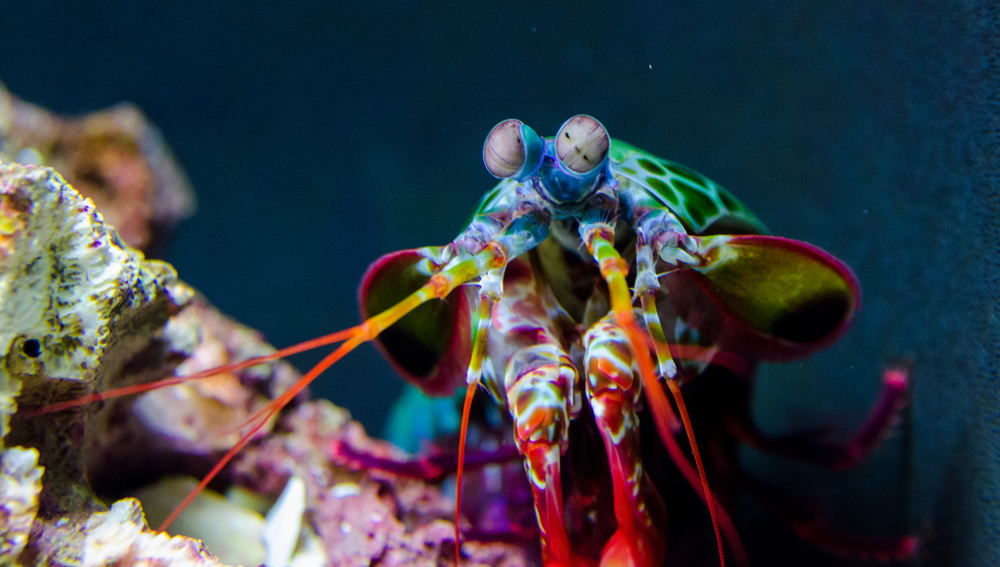
The mantis shrimp boasts one of the most complex visual systems in the animal kingdom. While humans have three color-receptive cones, these crustaceans have between 12 and 16, allowing them to see a spectrum far beyond our capabilities. Their eyes can detect polarized light and ultraviolet, providing a vibrant, surreal view of the ocean world. According to BBC Wildlife Magazine, this enables them to spot prey and predators with unmatched precision.
Their eyes operate independently on stalks, which means they can move in multiple directions simultaneously. This provides the mantis shrimp with a unique trinocular vision and depth perception. Such skills are not just for show; they use their precise vision to hunt with incredible accuracy, striking their prey with the speed of a bullet. It’s a superpower fit for a superhero of the sea.
2. Bees

Bees may seem small and unassuming, but their vision is nothing short of spectacular. They perceive ultraviolet patterns on flowers, a guiding map that helps them locate nectar with pinpoint accuracy. They can also see polarized light, aiding in navigation even on overcast days. This remarkable adaptation aids their vital role in pollination, ensuring that they can function in diverse environmental conditions.
Their view of the world is a kaleidoscope of colors and patterns invisible to us. The ultraviolet markings on flowers are stark and vivid to bees, creating a sensory experience we can only imagine. This adaptation not only benefits their survival but also plays an essential role in the ecosystems they inhabit. Through their eyes, the mundane becomes vibrant, a testament to nature’s ingenuity.
3. Snakes
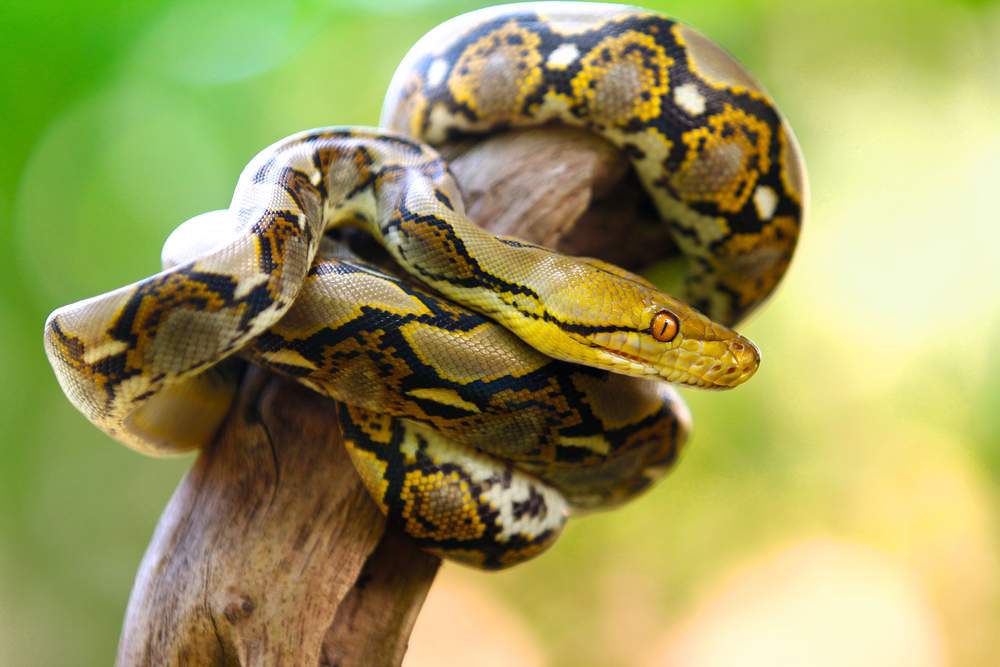
Snakes possess a heat-sensing capability that can only be described as nature’s night vision. Certain species, like pit vipers, boas, and pythons, have specialized pit organs that detect infrared radiation, allowing them to see the heat emitted by warm-blooded prey. This ability functions exceptionally well in the dark, giving snakes an edge when hunting at night, say the experts at the American Natural History Museum. Their thermal vision paints a world of heat maps, revealing otherwise hidden life in the shadows.
This infrared sense complements their other senses, such as smell and vibration detection, creating an intricate sensory web. Snakes can thus track and ambush prey with deadly precision, even when visibility is low. This adaptation is a silent testament to their evolution as effective predators. In the nocturnal world, snakes are unparalleled, seeing life through a lens of heat and movement.
4. Cats

Cats are often celebrated for their night vision, an adaptation that allows them to stalk prey under the cover of darkness. Their eyes possess a high number of rod cells, which are sensitive to low light, and a reflective layer behind the retina, known as the tapetum lucidum. This layer enhances their ability to see in dim conditions, giving them an advantage as nocturnal hunters. While not capable of seeing in total darkness, their night-time vision is vastly superior to that of humans.
Cats’ eyes also have a wider field of view, which supports their superior ability to detect movement. This acute motion detection is crucial for their survival in the wild, where quick reflexes can make the difference between a meal and an empty belly. The feline eye is a marvel of evolutionary engineering. It’s no wonder they navigate the night with the grace and stealth of a phantom.
5. Birds Of Prey

Birds of prey, such as eagles and hawks, possess eyesight that is legendary in its acuity. As reported in the New York Times, their vision is estimated to be four to five times sharper than that of the average human, allowing them to spot potential prey from great heights. These birds have a higher density of photoreceptor cells in their retinas, providing them with a detailed and expansive view of their surroundings. Their eyes are specially adapted to focus quickly and gauge distance with extraordinary accuracy.
This visual prowess is essential for their way of life, as catching fast-moving prey requires split-second timing and precision. The ability to see ultraviolet light also aids them in detecting urine trails left by small mammals, giving them clues where their next meal might be hiding. Their eyes are perfectly tuned instruments for survival, a testament to their role as apex aerial predators. In the sky, their vision reigns supreme, a natural masterpiece of evolutionary design.
6. Frogs
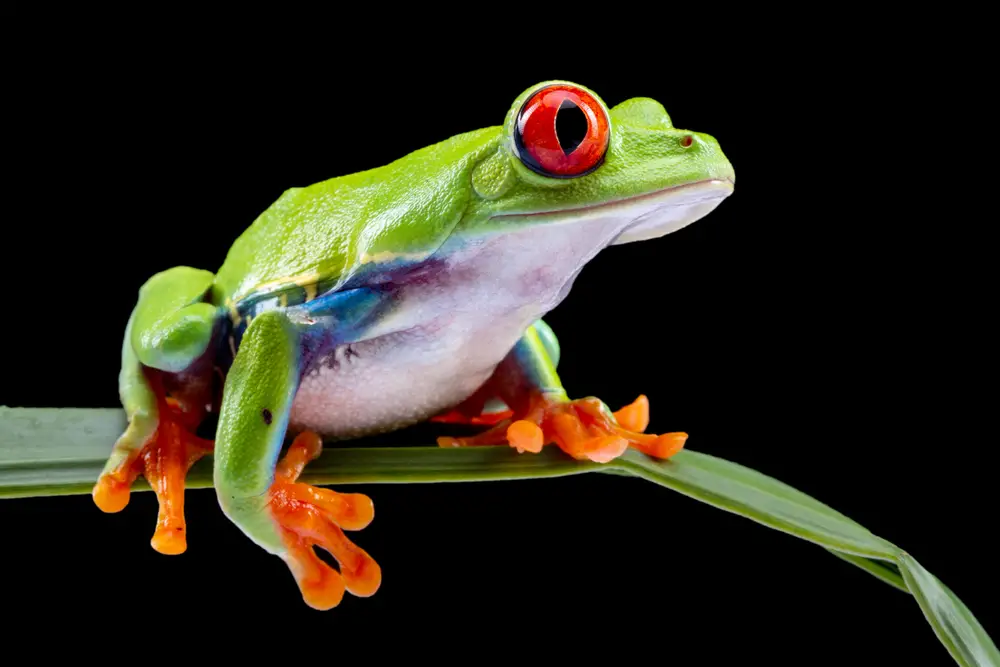
Frogs may not be the first creatures that come to mind when thinking of extraordinary vision, but their eyes are marvels in their own right. They have a unique ability to see in almost all directions without moving, a feature attributed to the position and shape of their eyes. This panoramic vision is critical for detecting predators and prey in their environment. Additionally, frogs can see well in low light conditions, an adaptation crucial for their crepuscular and nocturnal lifestyles.
Their eyes also have a third eyelid, known as the nictitating membrane, which provides protection and moisture while maintaining visibility. This feature is particularly useful in their aquatic habitats, where they must contend with both water and land predators. Frogs thus occupy a unique niche, where their visual abilities are finely tuned for survival on multiple fronts. Their world is a blend of land, water, light, and shadow, navigated with their signature amphibious grace.
7. Chameleons

Chameleons are famous for their color-changing abilities, but their vision is equally remarkable. Their eyes can move independently, covering a full 360-degree visual field without moving their heads. This allows them to keep watch for predators and prey simultaneously, a critical survival trait. Their unique monocular and binocular vision offers both depth perception and a wide-range view, essential for their insectivorous diet.
Chameleons also possess the ability to see ultraviolet light, which plays a role in their social interactions and possibly even in their overall health regulation. This ultraviolet vision is thought to enhance their color perception, making their world more vibrant and detailed than ours. With these visual adaptations, chameleons are adept at navigating their arboreal habitats. Their eyes are both a tool and a weapon, finely tuned for a life of deception and disguise.
8. Butterflies
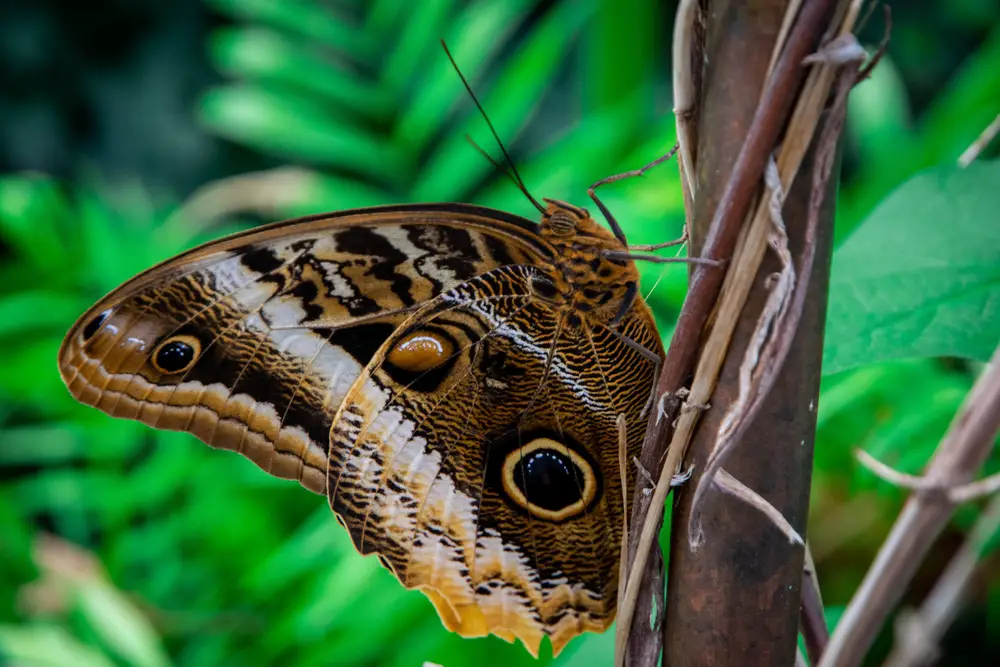
Butterflies are more than just pretty wings; they harbor complex eyes that see beyond human capacity. Their compound eyes contain thousands of lenses, allowing them to detect a wide array of colors, including ultraviolet light. This expanded visual spectrum is essential for their survival, aiding in the recognition of mates and flowers. Their ability to perceive UV patterns on flowers guides them to nectar sources, an adaptation crucial for pollination.
Their world is awash in colors and patterns that are invisible to us, a sensory tapestry woven with light and motion. The intricacy of butterfly vision is also a marvel of natural engineering, allowing them to evade predators with agile flight. By interpreting the complex patterns of light and shadow, butterflies navigate a world that is both beautiful and hazardous. Their visual prowess is a testament to their ecological importance and evolutionary success.
9. Tarsiers
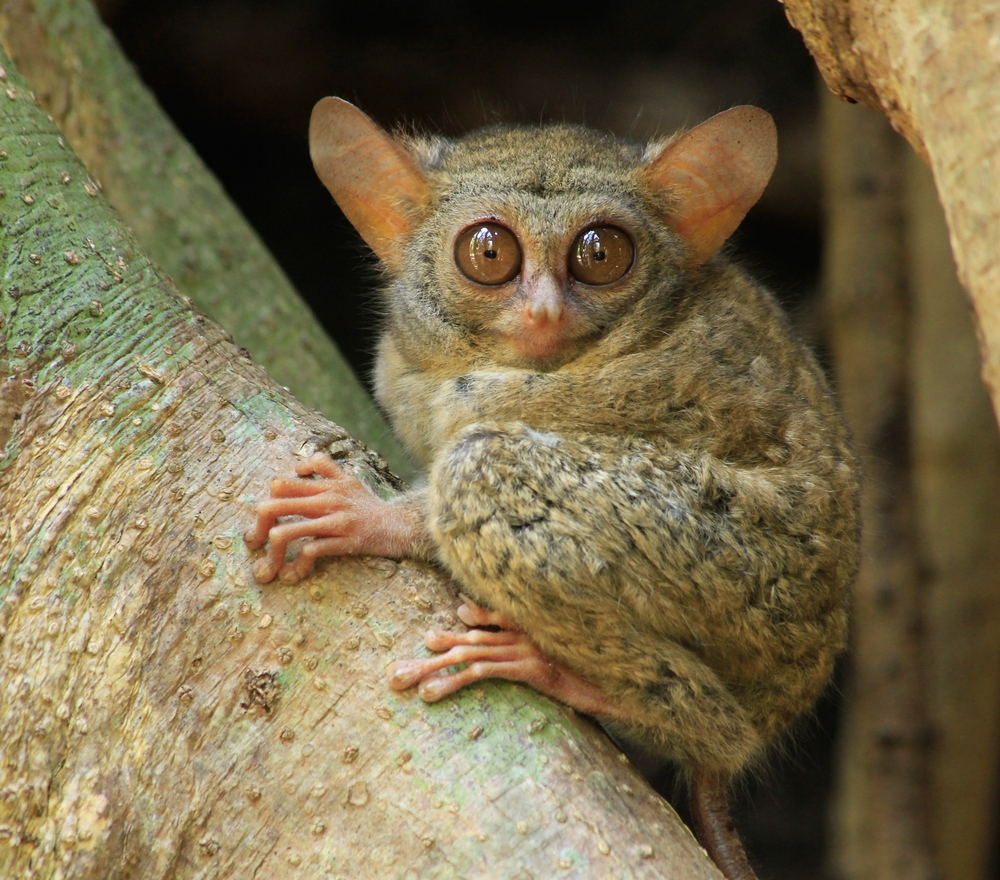
Tarsiers, those enigmatic primates from Southeast Asia, possess eyes that are truly a sight to behold. Their eyes are enormous relative to their body size, providing acute night vision. This adaptation is essential for their nocturnal lifestyle, where they rely on their vision to hunt insects and small vertebrates. Their large eyes capture and amplify light, much like a natural night-vision device.
These primates also have a unique ability to rotate their heads almost 180 degrees, compensating for their fixed eye sockets. This flexibility in movement ensures that they can maintain a constant visual on their surroundings, critical for detecting both prey and predators. In their dimly lit world, every movement matters, and their visual system is exquisitely tuned for survival. Tarsiers’ eyes are not just windows but guardians, ensuring they thrive in the shadows of the night.
10. Octopuses
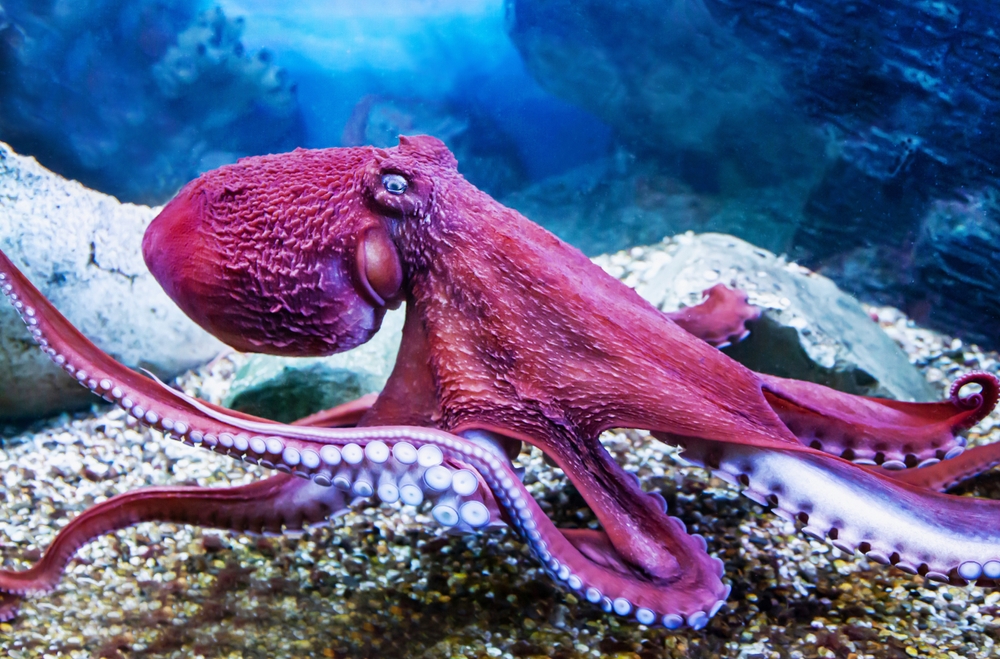
Octopuses are renowned for their intelligence, but their vision is equally intriguing. These cephalopods have eyes that function remarkably like a camera, with a sophisticated lens and retina. Their pupils are rectangular, providing a wide field of view, and they can detect polarized light, an ability that aids in hunting and communication. This unique visual system allows them to discern changes in their environment with acute sensitivity.
The adaptability of octopus eyes is also evident in their color vision, which, although limited, is compensated by their ability to perceive different patterns of light polarization. This skill is thought to help them blend into their surroundings, a key survival tactic in the ocean’s diverse habitats. Octopuses navigate an underwater world of light and shadow with a visual system that is as dynamic and enigmatic as the creatures themselves. Their vision is a key element of their otherworldly camouflage and complex behaviors.
